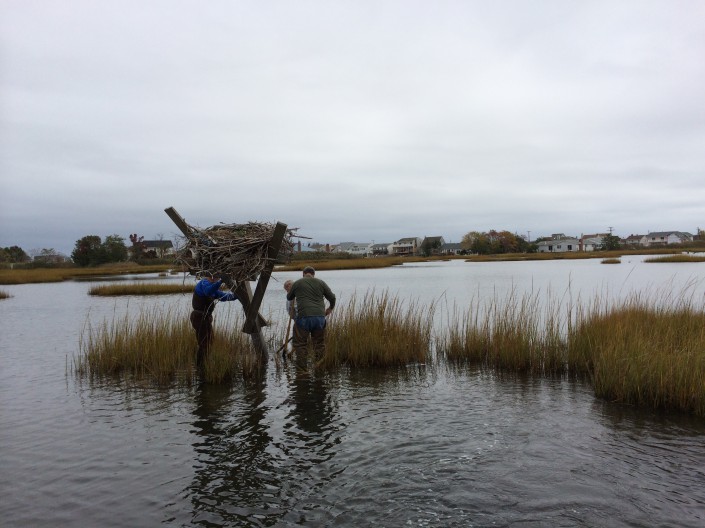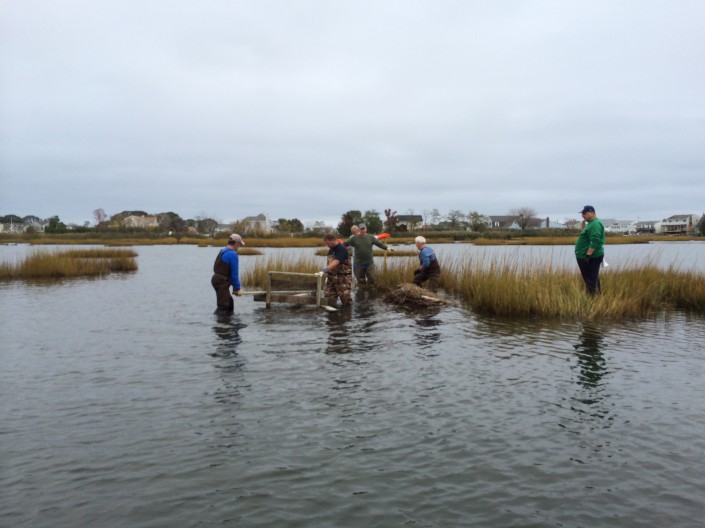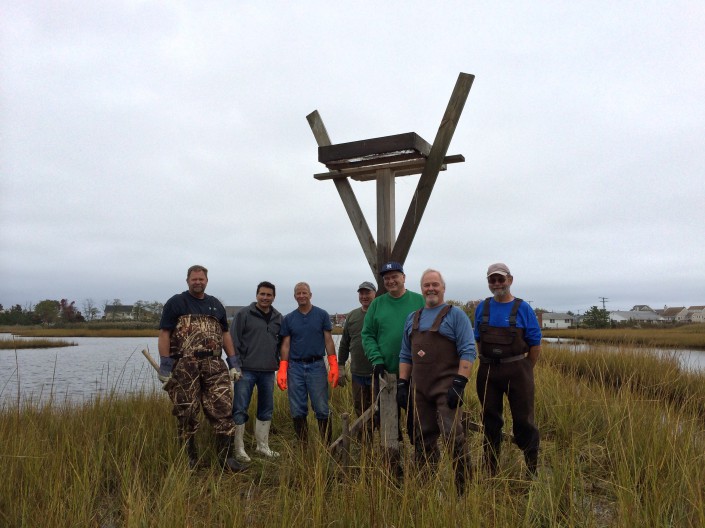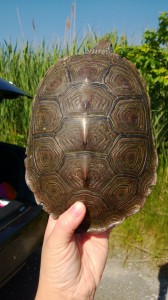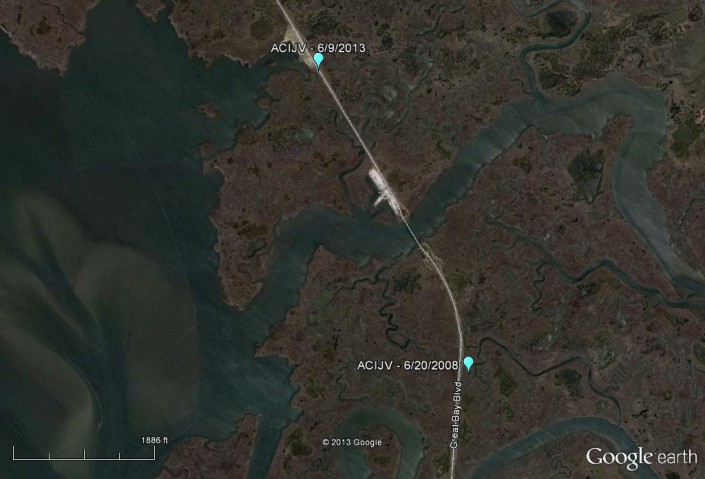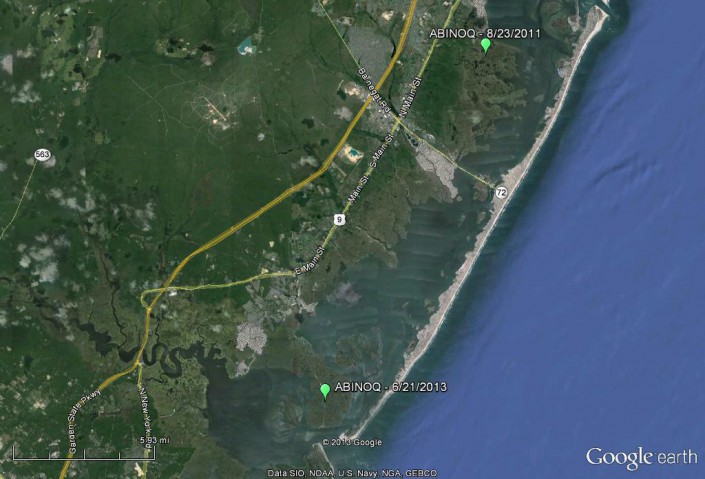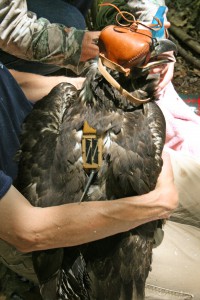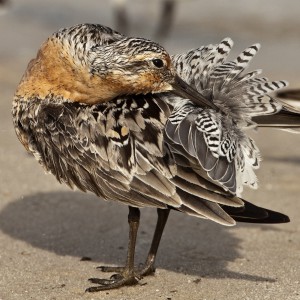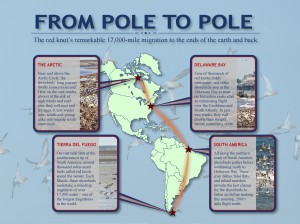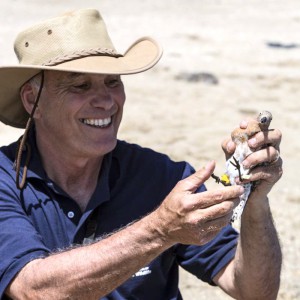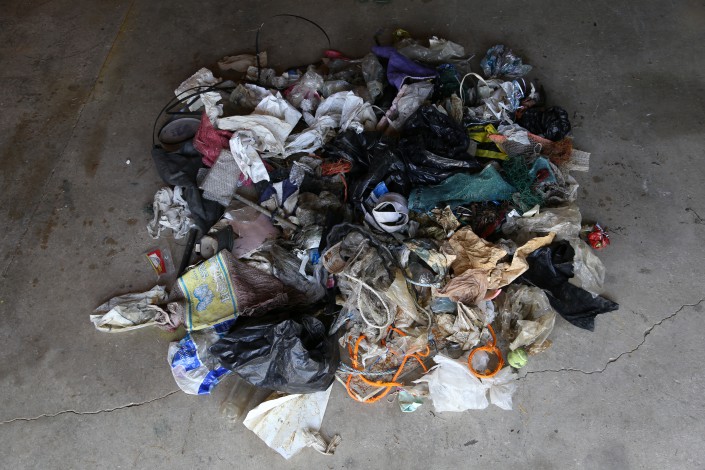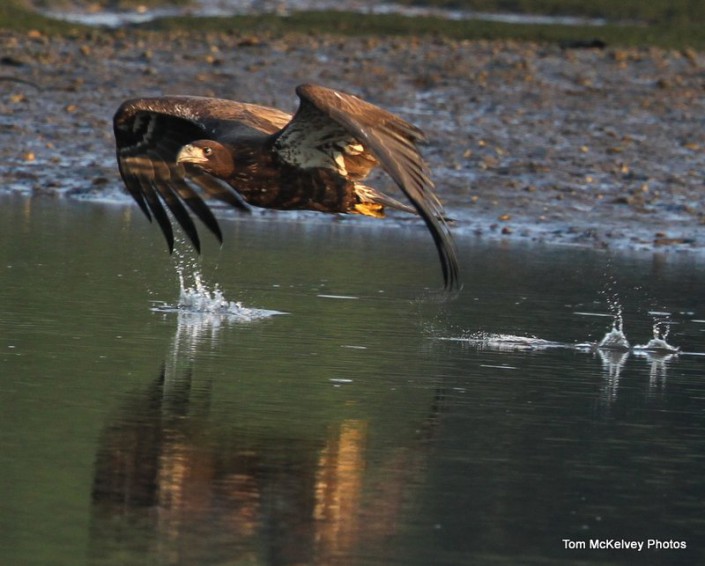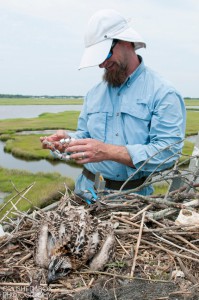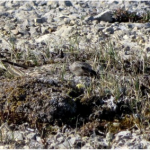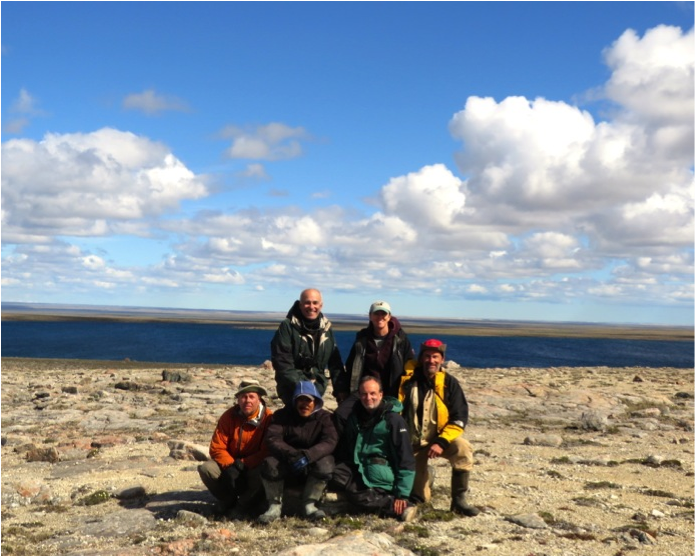Photo(s) from the field
Volunteers help to “re-plant” leaning osprey platform
by Ben Wurst, Habitat Program Manager
This past week I was joined by a large group of volunteers to remove and re-plant a leaning osprey tower in Point Pleasant. It all began after Superstorm Sandy barreled through the area a little over a year ago…
This nest, along with many others, were uprooted from where they were originally installed. Many homes in the area were flooded by the storm surge associated with the storm (and many were still rebuilding when we were there). Any and all debris that was created ended up being pushed to the high areas of the marsh and in turn, people’s yards. This platform ended up in a homeowners backyard. Fortunately the platform was not lost and was thankfully re-installed by a bulkheading company who was working on the homeowners house. This was great news for the ospreys! Their nest had been returned to the saltmarsh and was, in turn, used again by them this past summer. They raised one nestling on the platform.
Things a-drift…a strong Nor’easter ended up pushing over the platform, which caused it to lean…significantly. However, the ospreys adapted and added nesting material to make sure their only nestling would not fall out. At the same time we made plans to re-plant the platform in a section of marsh with more soil, so the platform would have a firm foundation and support. A crew of strong and able volunteers met up with me to help fix the problem. They pulled out the platform and then we transported it to the new location. There we dug a new hole (around 2-3′ deep) and they easily dropped the short (around 12′ high) platform into the hole. These volunteers did a great job, and I was happy to see that many of them lived in the local area. It’s great to see locals getting involved in their local environment and I know that they’ll continue to watch over the nest if anything should happen to it in the future. I’m planning on working with the local community association (who owns the land) to install a couple more platforms for ospreys. There’s little suitable nesting habitat for ospreys up on N. Barnegat Bay and in the past we’ve had problems with birds nesting on houses, so this will only help reduce those occurrences.

